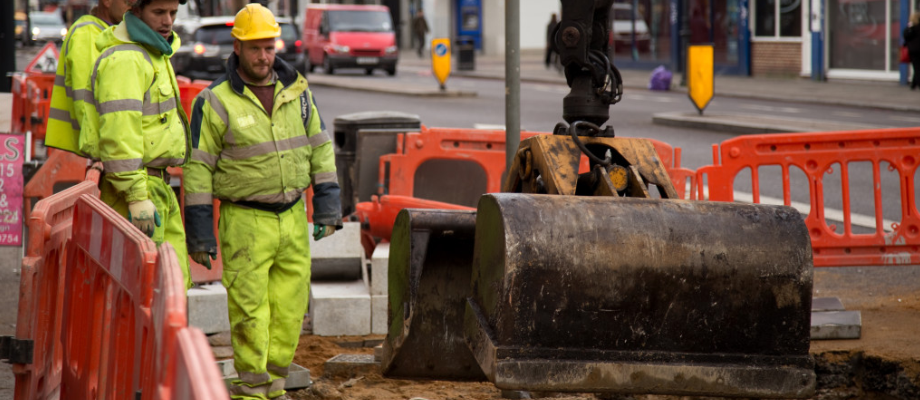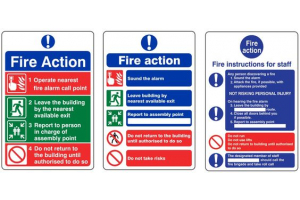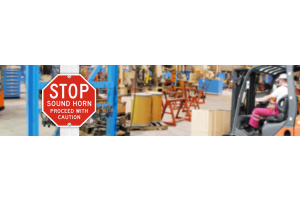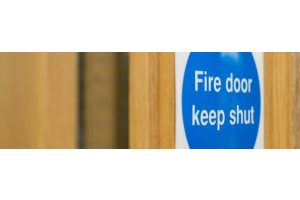
Work Affecting The Public
It is not only workers who are at risk from construction work. Members of the public are killed and seriously injured each year. The dead and injured include children. Accidents often happen when people are walking near a building being built, refurbished or demolished, or walking near work in the street. Remember, when working in public areas, the work needs to be planned and executed to take account of the needs of children, people with prams, the elderly and those with disabilities.
Keeping the public out: The best way to protect members of the public is to keep them out of the area where you are working. This is generally achieved by erecting a 2 m high perimeter fence or hoarding. If alterations are needed or some of the fencing needs to be taken down temporarily, make sure it is put back before leaving the site for meal breaks and at the end of the day. Lock the site gates and any other doors and windows at night. If work is being done in occupied premises, clear responsibilities for maintaining the fencing and keeping those not involved in the work away need to be agreed with the building occupiers. If the site is near a school, or on or near a housing estate, it may be helpful to contact the head teacher or residents’ association etc to seek their help to discourage children from trespassing. Many children see construction sites as adventure playgrounds.
Even though they may be entering the site without authority or may be trespassing, they should still be protected from site dangers; many will be too young to appreciate the risks they are running. Take the following steps to reduce the chance of children injuring themselves if they do get onto the site. At the end of the working day: barrier off or cover over excavations, pits etc; isolate and immobilise vehicles and plant; if possible lock them in a compound; store building materials (such as pipes, manhole rings, cement bags etc) so that they cannot topple or roll over; remove access ladders from excavations and scaffolds; and lock away hazardous substances. Security measures may also be needed. These can often strengthen safety measures.
Falling materials
Protect passers-by with toe boards, brick guards and/or netting on scaffolding, but remember, most netting will only retain light material. Fans and/or covered walkways may also be needed where the risk is particularly high. Use plastic sheeting on scaffolds to retain dust, drips and splashes which may occur when cleaning building facades. Make sure the sheets do not make the scaffold unstable. Tie down loose materials and remove debris from scaffold platforms. Do not stack material on scaffolds unless it is needed, and then not above the level of the toe board unless brick guards or another way of retaining material has been provided. Tie down scaffold boards if high winds are possible. When using gin wheels or power-driven hoists, select a safe place where members of the public are not at risk. Use debris chutes when removing debris into a skip. Cover over the skip to stop flying debris and cut down dust.
Work in the roadway or footpath
When working on the footpath or roadway, there could be a hazard to pedestrians and traffic. Road traffic may also present a hazard to the people on site. The Code of Practice, Safety at street works and road works 41 relating to the New Roads and Street Works Act 1991,42 gives advice about traffic signing, the protection of work areas and pedestrian diversions.
signs for pedestrians to warn people about the work and the diversions they are expected to follow; temporary traffic controls and their maintenance; cones, and barriers to mark the safety zone within which the work can be carried out safely; barriers and tapping boards to protect the public. Barriers around street works perform two functions. First, they alert the public to the presence of such work and direct them to where they want to be via a protected area. Secondly, if members of the public do approach the site, the barriers should be of sufficient strength and stability to prevent them being injured if they fall; suitable temporary walking surfaces (including ramps if required), paying particular attention to the needs of the elderly, those with prams, wheelchair users and visually impaired people temporary lighting, which might be needed at night if there is insufficient street lighting; materials storage, eg do not leave paving slabs propped on edge, or pipes loosely stacked in areas where they might be disturbed. Do not store materials in the path of pedestrians and watch out for trailing cables; the movement of vehicles and plant into and out of the work area; providing high-visibility clothing for those working on or next to the roadway; other hazards, eg buried cables and support for the sides of excavations.
On some occasions, the pavement will have to be closed to protect the public, eg during pavement work, demolition work, facade cleaning, raising hot asphalt, scaffold erection or dismantling. The area may need to be barrier-ed off and a safe alternative route provided for pedestrians, Get in touch with the Highways Authority for advice. Scaffolding: Ensure that scaffolding does not present a danger to members of the public after it has been erected. Ensure that there are no protruding components that can injure people as they walk past. If a covered walkway is provided, make sure it is properly demarcated. Be aware of the needs of people with disabilities, eg visually impaired people may require tapping boards at low level to ensure they follow the protected route. Take steps to stop people gaining access to the scaffold when you are not on site by removing ladders at ground level. During refurbishment or repair work, think about additional places where access to the scaffold can be gained, eg from inside the building through a higher-level window, and take steps to avoid it.
Dusty and hot work
Fence off hot work, such as welding or the use of disc cutters, to contain dust and sparks. Fence off bitumen and similar boilers which have to be sited in a public space. Site visitors, Make sure site visitors report to the person in charge of the site and know where to go – notices may be required at the site entrance. A waiting area may be needed. Visitors should not be allowed to wander around the site alone. A booking- in system may be needed on larger sites. When housing estates are being built or properties are being refurbished, people not involved in the work who are unfamiliar with construction site hazards may well want to look around the site. Make sure they are accompanied at all times and given any necessary protective equipment such as helmets or boots. Programme operations so that work is not in progress on the parts of the site the public visit regularly. Arrange and sign access routes across the site to keep visitors away from site hazards.




